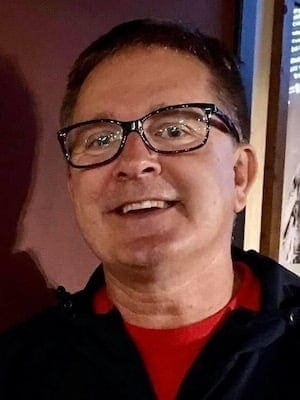T.E.D., which stands for Technology, Entertainment and Design, is a nonprofit devoted to “Ideas Worth Spreading” that shares the ideas of some of the world’s most curious, inspiring thinkers and doers.
Ron Finley is one of those thinkers and doers.
According to his T.E.D. bio, he “plants vegetable gardens in South Central Los Angeles – in abandoned lots, traffic medians and along the curbs.
Why? For fun, for defiance, for beauty and to offer some alternative to fast food in a community where ‘the drive-thrus are killing more people than the drive-bys.'”
Ron Finley inspired me. He calls himself an “ecolutionary” and he wants us to become ecolutionary gardeners, too.
In his T.E.D. talk, Finley defines gardening in the inner city as “the most therapeutic and defiant act” possible.
“I see young people, and they want to work, but I see kids of color and they’re on this track that’s designed for them that leads them to nowhere,” he said.
“With gardening, I see an opportunity where we can train these kids to take over their community, to have a sustainable life. And when we do this, who knows, we might produce the next George Washington Carver.”
Finley continued: “What I’m talking about is putting people to work, and getting kids off the street, and letting them know the joy, the pride and the honor of growing your own food, opening a farmers market.”
Finley’s message struck home with me, and I decided to create an urban garden at my inner-city elementary school that was originally built on farmland.
I saw potential for teachers and students in our school community to use math and science skills to work with the land to produce fresh fruits and vegetables. I was energized by the idea of using language-arts skills to talk and write about the land.
We could grow tomatoes, I thought, and students could watch the process of seeds and soil turning into healthy meals.
Our urban garden would provide a way to build community in our school and replace fast-food meals with items grown in the school garden.
So, I talked to several of my colleagues. Our media specialist helped me to plan out our urban garden while our head custodian found leftover wood and built a 48-inch by 120-inch by 6-inch raised bed. And the effort grew.
Four of our fifth-graders used math skills to help calculate how much soil we needed to buy (about 10 bags) and how much money we would save if we bought 2 cubic feet of soil per bag as opposed to 1.5 cubic feet per bag. We saved about $30.
On a Saturday afternoon, we spent an hour laying down plastic, putting in soil and planning out the plot for the plants and seeds. We also put our first cabbage plant into the ground.
Some of our Latino families who had large gardens before moving to South Carolina offered their expertise.
Our garden was a reality.
Each of the 26 classes in our school plans to adopt a plot and plant in the urban garden. They will nurture and care for that plot until the end of school.
The students are excited. When asked why we should grow an urban garden at our school, Christian said, “It beautifies the school.”
Javier thought having a garden “makes a good impression on parents.”
“We can give vegetables to people who need food,” Bella said.
So many possibilities.
I especially enjoyed watching Jaquavious at work in the garden. As he calculated the needs and costs of the garden and put his hands into the soil, he smiled tenderly at the vulnerable plants.
I could see that he was taking over his community and showing us how to have a sustainable life. It was a good vision.
Trevor Barton teaches second grade and is a member of First Baptist Church in Greenville, S.C.
A fourth grade public school teacher and member of First Baptist Church in Greenville, South Carolina.

